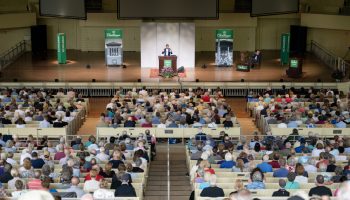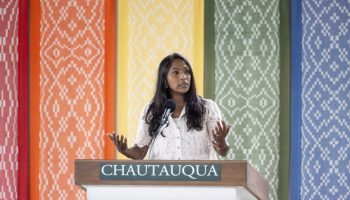Photographer Joel Sartore travels frequently for extended periods when he shoots for National Geographic magazine, a job that keeps him on the go without much time for contemplation.
That changed 11 years ago when his wife was diagnosed with breast cancer.
“I was grounded for the first time in my career. It gave me about a year at home, while my wife was being treated, to think about what I could do to maybe try to save animals from extinction,” he said. “I’d done a lot of magazine stories, but those come and go after a month.”
At 10:45 a.m. Monday in the Amphitheater, Sartore will discuss the project that resulted from that year at home: the Photo Ark.
The name of the project is a reference to the story of Noah’s Ark, a gargantuan boat that served as a refuge for every species on Earth during a great deluge. The mission is to visit zoos and conservation centers around the world and photograph each of the captive species, several of which are endangered or near extinction. Last year Sartore fixed his lens on a northern white rhinoceros, a species with only three currently living.
“I’ve photographed California condors, Mexican gray wolves [and] black-footed ferrets, and these animals were all down to just about nothing,” Sartore said. “They’ve been saved thanks to people who cared, thanks to captive breeding and habitat restoration.”
Sartore has captured images of more than 6,000 species in 40 countries. He said he found his initial inspiration in the work of painter George Catlin and photographer Edward Curtis, both of whom spent their lives capturing images of Native American life knowing that European settlement would permanently change those cultures.
“I think that when people know there’s a need, they do care,” he said. “That’s kind of the role of the Photo Ark [to make] them aware of the fact that these animals are in trouble and could use our help.”
When he photographs animals for the ark project, Sartore keeps things consistent. He brings a studio setup with professional lighting and a black or white backdrop. His subjects range from the giant panda to the Eastern subterranean termite.
As part of the campaign, the images have been projected onto the Empire State and United Nations buildings in New York City and Saint Peter’s Basilica at the Vatican in Rome.
“If these species go, so do we. We have to have pollinating insects to bring us fruits and vegetables, we have to have healthy intact rainforests to help regulate our climate, and it is really important to preserve all these other species of plants and animals if we want to survive ourselves,” he said. “I would just ask people to come with an open mind and a willingness to make the world better than the way they found it.”





